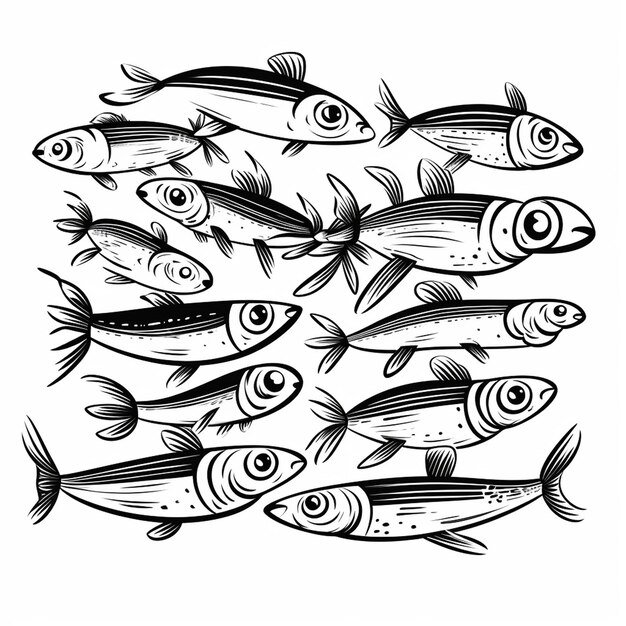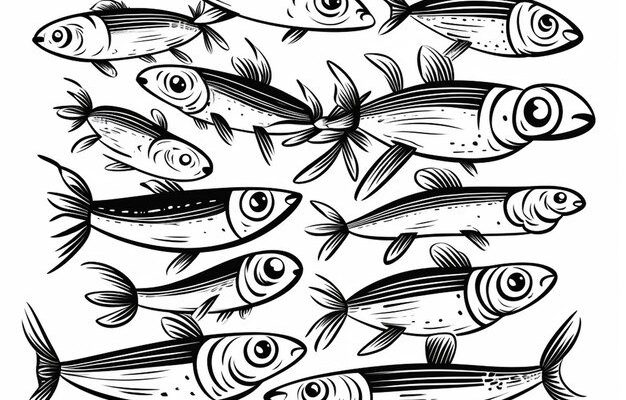
Anchovies are part of a broader family known as Engraulidae, and they’ve swum through oceans since ancient times. While they might seem like little more than a pizza topping or a component in Caesar dressing, these fish have a fascinating tale to tell about survival, adaptation, and their role in our world. So, grab a cup of coffee, and let’s dive deep into the evolutionary journey of the anchovy.
Understanding Anchovy Origins
To appreciate the anchovy’s story, we have to start at the beginning. The anchovy family is believed to have originated around 60 million years ago. That’s right! While dinosaurs roamed the Earth, the early ancestors of today’s anchovies were already gliding through ancient oceans. These little fish thrived in warm waters, finding their niche in the vast marine environment.
As they evolved, anchovies developed various adaptations that helped them survive. They’re small, usually only a few inches long, which allows them to evade larger predators. Their sleek, streamlined bodies make it easier to swim quickly, darting away from danger. Plus, their ability to school—swimming together in harmony—provides safety in numbers. You might be wondering, why does this matter? Well, these adaptations set the groundwork for how they evolved and interacted with their environment over millions of years.
The Anchovy’s Diverse Family
Anchovies belong to the larger group of fish known as forage fish. This group comprises small fish that serve as a crucial food source for bigger predators, including larger fish, seabirds, and even marine mammals. They typically reside in schools near the surface of the water, feeding primarily on plankton.
Interestingly, more than 140 species of anchovies exist around the world. These range from the well-known European anchovy to the Peruvian anchovy, which is a significant catch in commercial fisheries. The diversity within the anchovy family illustrates how evolution has tailored different species to thrive in various habitats—from oceanic waters to brackish estuaries.
Here’s a quick look at a few notable species:
- European Anchovy
- Peruvian Anchovy
- Mexican Anchovy
- Sardine Anchovy
Each species has its unique adaptation, making them beautifully suited to their specific environments.
Surviving Changing Environments
Throughout their history, anchovies have faced numerous challenges, from climatic shifts to human impacts. One fascinating example is how these small fish respond to changes in water temperature. When temperatures rise, anchovies may migrate to cooler waters, seeking refuge and food. This ability to adapt is crucial for their survival, especially as climate change continues to impact oceanic environments.
Moreover, anchovies have shown resilience against overfishing practices. While they face threats from commercial fishing, their rapid reproduction rates help populations bounce back more quickly than some larger fish. Here’s the thing: anchovies can reproduce multiple times a year, laying thousands of eggs that hatch into tiny fry. This means that, despite the challenges they face, anchovy populations can recover relatively efficiently—if managed sustainably.
The Role of Anchovies in Ecosystems
Anchovies play a vital role in marine ecosystems. As a forage species, they’re not just food for larger fish but also contribute to nutrient cycling within the environment. When anchovies feed, they consume plankton, which helps control plankton populations and maintain ecological balance.
Additionally, when anchovies die, their decomposing bodies provide nutrition for smaller organisms and enhance the overall productivity of marine habitats. So, every little fish matters! Their presence in an ecosystem often signals healthy waters, illustrating the interconnectedness of marine life.
The Human Connection: From Oceans to Plates
Humans have not only relied on anchovies as a food source for thousands of years but have also cherished them in different cultures around the globe. In Mediterranean cuisine, anchovies are cherished for their rich, salty flavor, often used in dishes like pasta puttanesca and as toppings on pizzas.
In some regions, such as Peru, anchovies are commercially harvested on a massive scale. The Peruvian anchovy, in particular, forms the basis of a lucrative fishing industry, with millions of tons caught each year. This highlights both the economic importance of anchovies to coastal communities and the need for sustainable fishing practices.
You might be surprised to learn that anchovy paste is a popular ingredient in many kitchens. It adds depth to sauces, dressings, and soups, proving that these tiny fish can pack quite a punch in flavor!
Conservation and Future Challenges
Despite their importance, anchovies face significant threats, primarily from overfishing, habitat loss, and climate change. These challenges not only endanger anchovy populations but also disrupt the marine food web they support. It’s crucial for us to consider how our actions impact these little fish that have endured for eons.
Sustainable fishing practices are essential for protecting anchovy populations. Many organizations are working to promote responsible anchovy fishing, ensuring that we can still enjoy these fish while preserving their ecosystems. Supporting sustainable seafood practices and making informed choices as consumers can contribute to the future health of anchovy populations and oceans.
Final Thoughts: The Importance of Anchovies
The evolutionary journey of the anchovy is much more than a simple tale of a small fish. It’s a story woven into the fabric of our oceans, ecosystems, and our plates. From their origins millions of years ago to their modern-day importance in culinary traditions, anchovies are a testament to nature’s adaptability and resilience.
So, the next time you see anchovies on a menu or in a recipe, remember that you’re not just enjoying a flavor; you’re partaking in a narrative that stretches back through millennia. As we move forward, let’s work together to ensure that this remarkable fish continues to thrive for generations to come.

